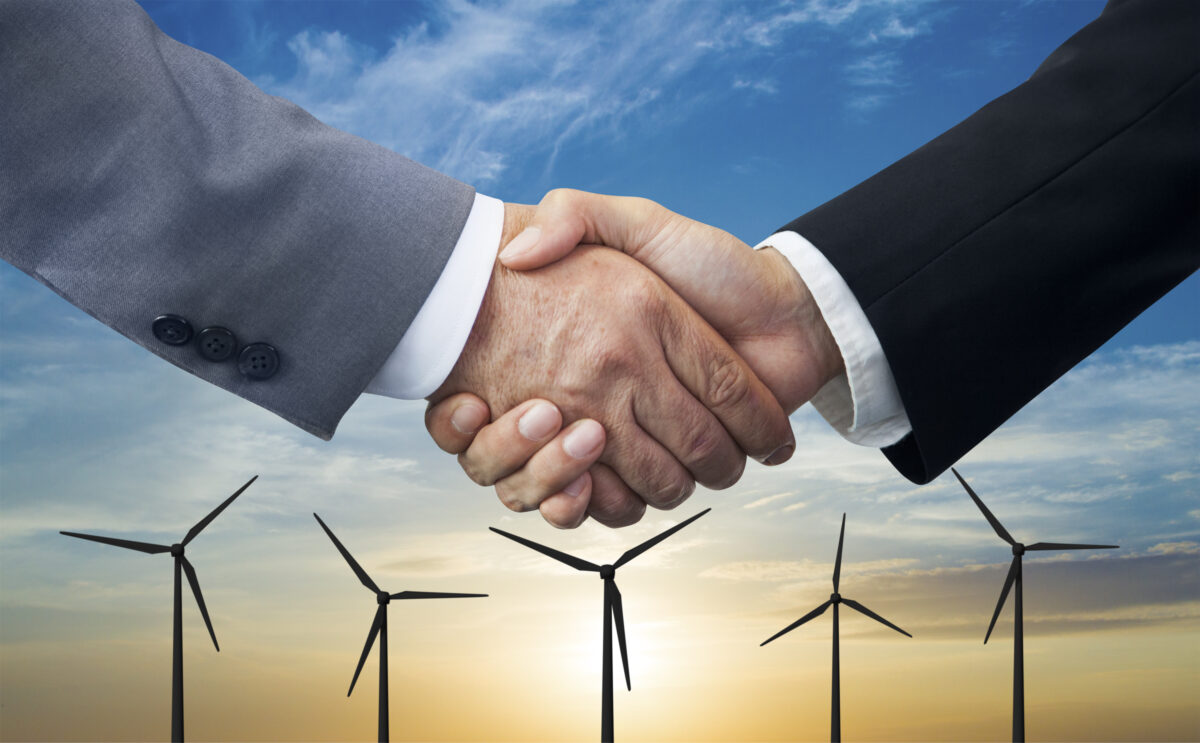Renewable energy isn’t just about cutting energy costs or reducing environmental impact—it’s also a practical way to generate income. For households and businesses, small wind turbines offer a unique opportunity to turn excess energy into profit. When wind turbines produce more electricity than needed, the surplus can be sold back to the grid, creating an additional revenue stream. This makes wind energy not only a sustainable choice but also a good financial decision, especially in regions with strong government support and incentives for renewable energy generation.
Wind Energy as a Financial Opportunity
When it comes to renewable energy sources every reason to install them is a good reason. The effect is one and the same – less pollution, less impact on the environment, and more energy safety. While many people choose clean energy because they are eco-conscious, some appreciate it for its financial potential. Wind turbines, in particular, offer a practical way to lower energy bills and generate additional income. By producing more electricity than they use, households and businesses can sell the excess energy back to the grid, creating renewable energy revenue streams while also reducing their reliance on traditional energy sources. While not everyone chooses wind turbines because of their financial benefits, it’s certainly a bonus.
How To Monetize Excess Energy Production
Wind turbines generate electricity by using the power of the wind to turn blades connected to a generator. With the right wind conditions and turbine capacity, the system may produce more electricity than a household or a business can use. That surplus can be sold back to the grid, providing an opportunity to earn additional income. That is why small wind turbines are a popular choice for people looking to invest in renewable energy. These systems not only reduce energy costs but also create a steady revenue stream from excess energy production.

How To Sell Excess Renewable Energy To The Grid
If your wind turbine produces more electricity than you need, you can sell the extra energy back to the grid and make money from it. Various European countries offer many different programs that allow homeowners and businesses to sell their excess energy. Ways to earn money from wind turbines profit everyone – those who can turn their investment into added income, buyers who can acquire cheaper energy, and governments who get help with reaching their climate goals.
Feed-in Tariffs in Europe
Feed-in tariffs (FiTs) have been a popular way of supporting residents wanting to invest in renewable energy sources in many European countries. These tariffs guarantee renewable energy producers (individuals, small businesses, communities) a fixed payment for the electricity they generate over a certain period. This solution allows for monetizing renewable energy production and encourages investment.
Germany
Germany’s Renewable Energy Sources Act (EEG) introduced FiTs to support renewable technologies. Wind energy producers received fixed payments per kilowatt-hour (kWh) over 20 years, ensuring predictable returns. However, recent reforms are shifting towards market-based mechanisms, requiring new wind and solar plants with capacities of at least 25 kilowatts to sell electricity on the open market instead of receiving guaranteed prices.
France
France has implemented FiTs to support renewable energy, including wind power. These tariffs are established by orders for specific technologies and guarantee a minimum price paid to renewable energy plant operators for electricity exported to the grid. For wind energy in cyclonic risk areas, the tariff period is set at 15 years.
Spain
Spain initially adopted FiTs to promote renewable energy, offering fixed payments to wind energy producers. However, policy changes have led to a reduction in FiTs, and the country has moved towards competitive auctions and market-based mechanisms to support renewable energy development.
It’s important to note that while FiTs have been instrumental in the early stages of renewable energy adoption, many European countries are transitioning to market-based mechanisms, such as auctions and Power Purchase Agreements (PPAs), to integrate renewable energy more efficiently into the electricity market.
What Are Power Purchase Agreements for Wind Energy?
A Power Purchase Agreement (PPA) is a long-term contract, typically lasting 10-20 years, between a power producer and a buyer. It allows individuals or businesses with small wind turbines to sell their excess electricity at a predetermined rate, providing additional income from wind turbines.
PPAs have become increasingly popular in the energy market thanks to the growing interest in renewable energy. PPAs offer producers a way to secure income by pre-selling part of their energy production. This gives them more confidence to invest in projects like wind turbines. On the buyer’s side, PPAs provide price stability in an unpredictable electricity market. This stability is attractive for large energy consumers. They seek cost predictability over the long term.
Discover Freen’s innovative solutions for renewable energy adoption. Schedule a consultation now.
Case Study: Revenue Opportunities from Wind Turbines in the UK
The United Kingdom is a good example of a country that is actively supporting households interested in selling the energy they generate through small wind turbines and other renewable sources. While the older Feed-in-Tariff (FiT) scheme is now closed to new applicants, the country is offering a new solution.
For new installations, the government introduced the Smart Export Guarantee (SEG) in 2020. Under this scheme, households with their own small-scale renewable systems, such as wind turbines, receive a fixed rate for the electricity they export to the grid. Licensed energy suppliers participating in SEG are required to offer a tariff, ensuring fair compensation for renewable energy producers. According to Ofgem’s SEG Annual Report for 2022-2023, there were 39 tariffs from 14 SEG licensees during that period, indicating a growing market for small-scale renewable energy exports.
These initiatives show how committed the UK is to supporting households, businesses, and communities interested in a greener energy system while earning money for the power they produce.
Wind Energy Revenue Opportunities for Businesses
Businesses can boost their income by using wind turbines to generate surplus electricity and selling it back to the grid. This not only creates a new revenue stream but also helps cut down on energy costs. Investing in wind turbines manufactured in Europe is a smart choice for businesses because they’re known for being reliable, high-quality, and efficient. With fewer maintenance headaches and better performance, businesses can get more value from their investment while supporting clean energy efforts.
Want to find out if wind energy is a viable investment in your area? Schedule a free feasibility study today.
Freen: Wind Turbines Made in the EU
At Freen we recognize the monetizing potential of small wind turbines. While our main goal is to help our clients lower their carbon footprint and run more sustainable households and businesses, we also want to help sell excess wind energy back to the grid. It can be another reason pushing people to invest in small wind turbines, which is always beneficial for the community and the environment.
Thanks to the quality of our turbines, they offer a long-term solution to energy concerns. They also provide additional income. Revenue from wind turbines can help offset the initial cost of installation. This revenue makes small-scale wind systems more popular. In the long term, energy producers can earn a profit. Their community also benefits.
Conclusion: Why Monetizing Wind Energy Production Makes Financial Sense
Revenue streams from renewable energy systems like small wind turbines are certainly helping to make clean energy more attractive. By selling energy back to the grid, individuals and small businesses can invest in this solution. They hope to see a faster return on their investment. With many options offered by governments, most countries help their residents with excess renewable energy sales. By choosing the right program for you, you can help clean your community’s environment. It also offers you a chance to earn real profit. These benefits have increased the popularity of small wind turbines. Opportunities in small wind energy fuel this growing trend, attracting people who seek an additional revenue stream while protecting nature.






